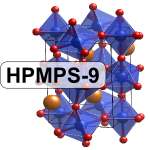Clinopyroxene is one of the most important constituent minerals in the lower crust and the upper mantle, and its rheological properties may determine the strength and seismic properties of the lower crust. Previous studies have shown that water content in clinopyroxene of lower crust and upper mantle varies significantly by tectonic backgrounds ranging from 50-700 ppm. However quantitative experimental investigations on the effect of water on the rheological properties of clinopyroxene have been sparse and controversy. We report here experimental deformation on synthesized clinopyroxene aggregates of varying amounts of water using a 5 GPa modified Griggs-type apparatus. Clinopyroxene aggregates of different water contents are prepared by dehydration of a water-rich natural clinopyroxene aggregates at room pressure in a mixed gaseous CO/CO2 flow buffered oven. The water contents are measured by FTIR before and after each experiment. Our results show that the strength of clinopyroxene aggregates decreases exponentially with the increase of water content. The rheological strength of clinopyroxene aggregates is reduced by about 4 times when the water content increases from 84 ppm to 662 ppm (the span of major water contents reported for clinopyroxene of lower crust and upper mantle), corresponding to a water fugacity exponent (r) value of 1.77. It is between the r values previously reported for clinopyroxene (r = 3.0, Chen et al., 2006; r = 1.4±0.2, Hier-Majunder et al., 2005). This r value is less than that reported for garnet (r = 2.4, Katayama and Karato, 2008), but larger than those reported for olivine (r = 0.7-1.25, Karato and Jung, 2003, Mei and Kohlstedt, 2000; r = 1/3, Fei et al., 2013) and plagioclase (r = 1.0±0.3, Rybacki et al., 2006). The effect of water on the rheological strength of clinopyroxene might be more significant than those for olivine and plagioclase but less significant than that for garnet. These results provide important constraints on the effect of water on the rheological properties of clinopyroxene in lithosphere.
|
|
|
|
Effect of water on the rheology of clinopyroxene at high temperature and pressure
1 : China University of Geosciences
(State Key Laboratory of GPMR)
* : Corresponding author
|
| Online user: 1 | RSS Feed |

|

 PDF version
PDF version